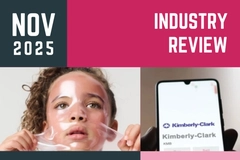EU’s decade-long evaluation confirms endocrine disruption risk from UV filter

The European Chemicals Agency (ECHA) has classified benzophenone-3 (BP-3), a UV filter widely used in sunscreens and personal care products, as an endocrine disruptor for both human health and the environment.
The decision follows a decade-long evaluation, which began in 2014, led by Denmark under the EU’s Community Rolling Action Plan.
The review draws on toxicological studies, reproductive toxicity research, and mechanistic evidence that confirm hormonal activity. Based on the findings, Denmark intends to propose in 2026 that the EU officially classify BP-3 as an endocrine disruptor under the CLP Regulation.
Such a move would compel cosmetics brands and manufacturers to adapt formulations and risk management practices. For consumers, it could mean tighter controls on sunscreens and personal care products that currently contain BP-3.
Endocrine disruption concerns
BP-3, also known as oxybenzone, was selected for evaluation due to its widespread use, consumer exposure, and detection in both human urine samples and aquatic environments.
During the review, Denmark examined registration dossiers, extended reproductive toxicity studies, and data from the US National Toxicology Program. The findings confirmed the concerns first raised by the Danish Center for Endocrine Disruptors in 2012.
Laboratory and animal studies showed that BP-3 interferes with hormonal pathways, affecting fertility, development, and reproductive organ function.
The study also investigated its main metabolite, benzophenone-1 (BP-1), which was also found to contribute to these effects. The document outlines: “BP-3 is absorbed through the skin, metabolised mainly to BP-1, and excreted in urine. This demonstrates systemic exposure in humans.”
.jpg) Endocrine disruption during pregnancy can have lasting impacts on child development.According to the report, BP-3 exposure in rodents led to altered estrous cycles in females, reduced sperm concentrations in males, and developmental effects in offspring.
Endocrine disruption during pregnancy can have lasting impacts on child development.According to the report, BP-3 exposure in rodents led to altered estrous cycles in females, reduced sperm concentrations in males, and developmental effects in offspring.
The Danish evaluation also highlighted environmental concerns. BP-3 and its metabolites were shown to disrupt hormonal systems in fish and aquatic invertebrates, leading to reproductive and developmental impacts.
Regulatory path forward
The case of BP-3 adds to growing regulatory pressure on UV filters and benzophenone derivatives in cosmetics, alongside the rising consumer scrutiny of product safety.
In April, the European Commission’s Scientific Committee on Consumer Safety (SCCS) raised concerns about benzophenone-2 (BP-2) and benzophenone-5 (BP-5), highlighting similar issues of endocrine activity and potential genotoxicity.
Earlier this year, the EU’s SCCS also raised an alarm over butylparaben’s endocrine-disrupting properties, deeming it unsafe for children at current limits in products such as lotions, toothpastes, and shampoos.
Industry players are responding to the regulatory crackdown with alternatives that work to meet rising safety demands.
This summer, Symrise launched an organic UVB filter, Heliopan 310, that is compliant with global regulations. The company positions the ingredient as a next-generation option amid mounting concerns over traditional UV filters such as BP-2 and BP-3.













